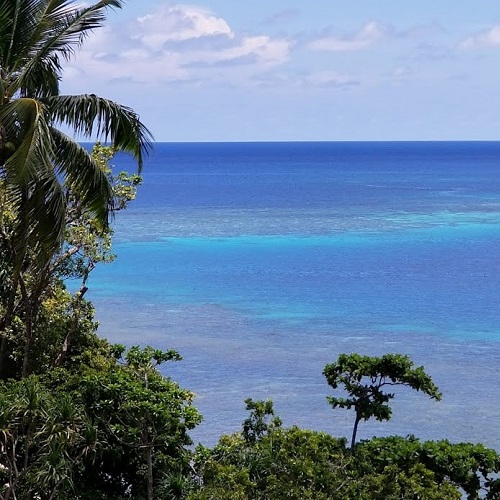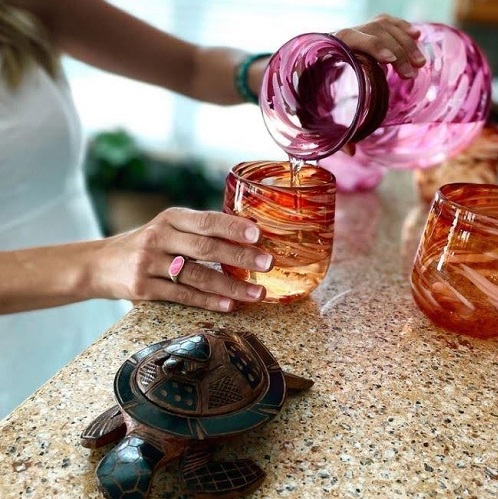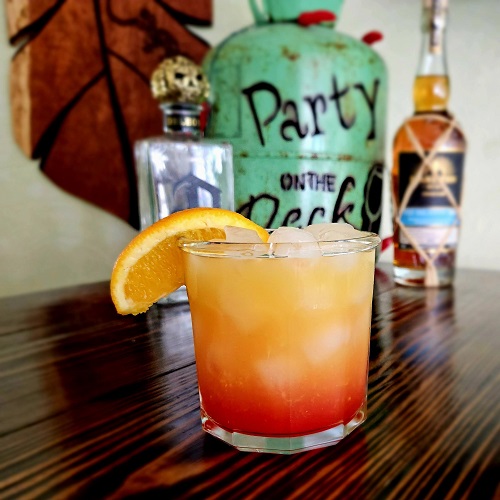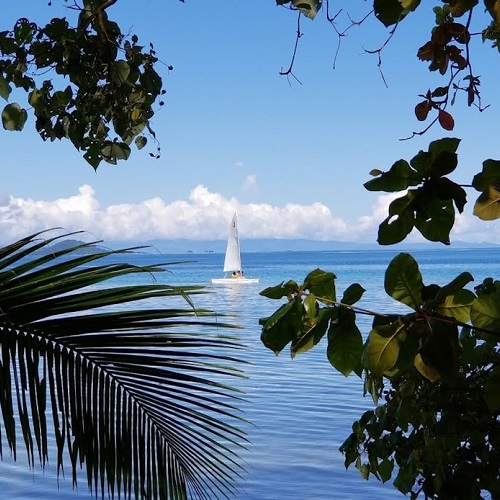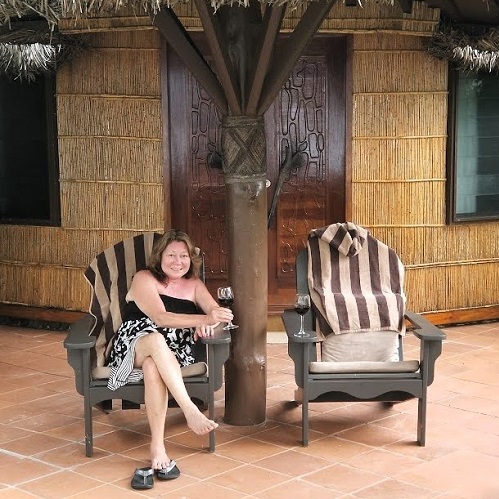
Tropical Color Palette Ideas for Every Room

Tropical Colors for Your Home: Stunning Curb Appeal
Fijian Warrior Club Guide: The Beauty and Cultural Significance of These Tribal Weapons
Discover Why Weaponry Of Fiji Is A Famous Symbol of Strength, Spiritual Power and Heritage
The indigenous Pacific Island cultures of Polynesia and Melanesia (where Fiji is located) are famous for their specially designed and intricately carved wooden weaponry. Each of these island nations was known for defending themselves from foreign invaders and for their own cultural ceremonies. Fiji in particular is known for its fierce tribal living and violent past. Due to this, Fijian warrior clubs are recognized as prominent symbols of prowess, spiritual force, skill, and ancestral power. Some warrior clubs were used by tribes to fight off the enemy, others were reserved for use by tribal chiefs and priests, and still others were for ceremonial uses only. Authentic and historical clubs are notable cultural relics which are often passed down as treasured heirlooms. They represent the ingenuity, talent, and exquisite craftsmanship of Fijian people.
Today, they are mainly used as symbolic objects in traditional ceremonies and dances, as souvenirs, and as decorative items in home design. When displayed as part of a
Table of Contents:
1. Cultural & Historic Roots Of Native Fijian Warrior Clubs 2. Symbolism 3. Different Types Of Fijian Warrior clubs 4. How They Are Made 5. Pacific Island Weaponry In Popular Culture 6. Warrior Clubs in Interior Decorating 7. Where To Buy: Cerulean Bay’s Collection Of Handcrafted Warrior Club Replicas 8. Recommended Pieces 9. Final Thoughts
Whether you are a collector, interior decorator, or you have inherited one piece as a family heirloom, this guide will help you understand the significance and meaning of these artisan-made tribal clubs.
In this article, we will explore everything you need to know about Fijian warrior clubs. They are truly unique and they come in an endless array of shapes with varying complexities of carving from the simple to the very ornate. You will learn about their origins, their legacy and their symbolism. We will explore various types, how they are crafted, and what materials are typically used. Finally, you will learn how you can use them in your home décor, where you can buy them, and how they can add authenticity, individuality, and character to your living space.
Cultural and Historic Roots of Native Fijian Warrior Clubs
The weapons of Fiji’s past are deeply rooted in the spiritual and cultural aspects of this amazing country. Throughout history, warfare was a profound part of the everyday life of the indigenous people of Fiji. Because of this, warrior clubs were central aspects of these communities.
The hostility and territorial conflicts between the clans within this South Pacific archipelago and with neighboring island nations caused weaponry to evolve in practical and symbolic ways. They enabled warriors to use weapons which were regarded as honorable, powerful, and spiritually strong.
Although Fijian warrior clubs were crafted for combat, they were also used as ceremonial objects in rituals, blessings, and tribal gatherings to honor the warrior spirit. They were passed down among generations as tokens of bloodlines while tribal chiefs and important figures wielded ornate clubs as symbolic representations of their power.

Photo Credit: The Fiji Times
Symbolism
In the archipelago of Fiji, club-shaped wooden weapons represented personal achievement, social status, and religious beliefs. A person’s combat skills or bravery were typically depicted by unique carvings of their achievements or tribal elements. Tribal chiefs and shamans carried elaborately decorated clubs as a sign of their significance, their connection with ancestors, and their “mana” or ability to work wonders and miracles. Each club also had its role on the battlefield and in sacred tribal rituals.
Different Types of Fijian Warrior Clubs
Warrior clubs in Fiji differ by style, shape, purpose, and background. Historical relics are of special interest to collectors of ethnographic antiques because they are so unique. But, they all have one thing in common – they embody the deep connection to ancestral tradition and an indigenous people’s philosophy.
Ula
The Ula warrior clubs were made in large numbers. They were small, projectile weapons with a carved, heavy head which made them perfect for throwing at enemies A Fijian warrior would have several available close at hand and would even tuck them into his belt to be ready for enemy pursuits. It was commonly used to ambush the enemy due to its compact design that enabled swift and precise moves. It was one of the most commonly used war clubs in Fijian history.

Photo Credit: Cerulean Bay
Sobesila
Also known as Cali or Sali, the Sobesila or “Y-Shaped” warrior club was known as the “neck-breaker” as it was used to deliver blows to the necks of enemies.

Photo Credit: Cerulean Bay
Totokia
This is one of most iconic handheld weapons whose design allowed for powerful and effective combat. It is also referred to as the “pineapple club” because of its heavy, spiked, ball-shaped head with a beak. It was truly a serious weapon that was used for taking down the enemy.

Photo Credit: Cerulean Bay
Culacula
The Culacula warrior club was reserved for tribal priests or chiefs. In Fiji, it was used to deliver blows as its paddle shape would cut or snap bone rather than shattering it as it has a sharp edge. It is thought that the Tongans used them as both a shield and a club when they first encountered Fijians and the Fijian war arrows in the late 1700s. They are broad, flat clubs with thin edges to cut like an axe, sometimes with serrated edges.

Photo Credit: Cerulean Bay
Kinikini
warrior clubs are similar in shape to the Culacula but they are smaller and were often more decorated as they were used by chiefs and spiritual leaders for ceremonial purposes. In fact, they are among the most ornate clubs of Melanesia. These paddle-shaped clubs were not used in actual warfare.

Photo Credit: Cerulean Bay
Kiakavo
The kiakavo was used in ceremonial dances. They come in a variety of sizes and can be made of hardwood or softwood.

Photo Credit: invaluable.com
Dui
The Dui warrior club was a fan-shaped club which was used for taking down the enemy with its very sharp edges.

Photo Credit: Cerulean Bay
How Traditional Fijian Weapons Were Made
Fijian artisans have a long-standing tradition of hand-carving wooden weaponry. This traditional method of craftsmanship is part of Fijian heritage with each piece taking weeks to complete as each club was carved by hand. Producing the intricate tribal details using stone tools during historical times required remarkable skill and experience.
Materials Used
Warrior clubs are still made from native hardwoods, primarily vesi and sometimes from ironwood.
There are two reasons why these particular woods were is used: first, they are known for their hardness, durability, and density which are all very important in weaponry made for battle. Second, these woods also allowed carvers to achieve a smooth and polished finish where they could engrave fine details and tribal symbols.
The carving process was done completely by hand using chisels and sharp stone tools that would slowly yet precisely chip away the wood. This was a painstaking process as creating just one club could take weeks or perhaps even months, depending on its design. For instance, the Totokia, or “pineapple club,” with its spiked head and narrow beak required much delicate and careful work to get each point just right. Basic hand tools allowed the carver to follow the wood’s natural shape and grain, giving each piece its unique character.
Once the basic shape was set, the surface needed to be smoothed. That part could take as much time as the initial carving. Traditionally, craftsmen used materials like sharkskin to sand down the wood but today, they use modern tools such as electric sanders with fine sandpaper to produce smoother and polished finishes. Many artists rub coconut oil into the wood to give it a natural sheen and to protect it from drying out and cracking.
Elaborate Ornamentation
The most distinctive feature of the weapon were the intricate carvings. Each warrior club was unique and told a story about the person who carried it, about the community, the land, and its history. Artisans adorned clubs with personal, tribal, or spiritual markings related to strength, power, or protection, which connected the individual to his forefathers.
Today, modern tools are used for sanding and polishing but most artisans still use traditional methods to carve intricate designs and details. Each warrior club stands as a powerful reminder of Fiji’s heritage, crafted with care and respect for the culture it represents.
Discover Tropical Home Décor Treasures
Bring island vibes into your home with exclusive artisan-made goods.
Pacific Island Weaponry in Popular Culture
Warrior clubs from the Pacific Islands have found their way into all sorts of creative spaces, from movies and museums to modern art.
Films like Moana and Hawaii Five-O have drawn on Polynesian designs to bring these traditional forms to life on screen. Museums like The Met and the British Museum proudly display Fijian warrior clubs as part of their Oceanic collections, giving people a glimpse into the history and artistry behind them. You’ll even see these clubs used in traditional dance performances where they add depth to stories of warrior culture and heritage.
Today, artists around the world find inspiration in the distinctive shapes and patterns of Fijian warrior clubs, incorporating them into everything from sculptures and jewelry to textile designs. These modern interpretations honor the strength and spirit of Fijian culture, bringing a piece of that heritage into our everyday lives.
Warrior Clubs in Interior Decorating
Today, these weapons still represent the symbols of tradition and the cultural heritage of Fiji. Warrior clubs are prized for their authenticity, style, craftsmanship, and historical value. They are awesome when displayed at home in tropical living rooms, offices, or even outdoors in tropical backyards escapes as a tribute to true Fijian heritage. These one-of-a-kind replicas offer a fantastic way to celebrate Pacific Island tradition. Their continuing appeal to collectors and interior designers from all over the world proves that these pieces are truly valued components in authentic
Depending on the size and number of them that you plan to use, warrior clubs make outstanding displays either mounted to walls or hanging freely, on their own, or arranged with other clubs as an arrangement. Larger ones that are propped up in a corner can fill an empty space and make a dramatic statement. Smaller ones that come with display stands for tabletops create excellent visual interest or they can simply lay flat and still look amazing.
Warrior clubs can be incorporated into almost any
Whether you only have one or you have several, warrior clubs bring a truly unique character to any room. If you are wondering how to incorporate them into your
- Pair them with earthy, natural décor elements. Use several tropical indoor plants or outdoor tropical plants
- Include lots of texture such as woven wallcoverings and mats to further enhance the island-inspired vibes
- Use a larger club on its own to create a real conversation piece
- Use smaller pieces as part of a gallery wall or a console table vignette
In Fiji, they even use them as door handles! How cool is that? You can try the same thing in your home!

Photo Credit: Cerulean Bay
Where To Buy: Cerulean Bay’s Collection of Handcrafted Warrior Club Replicas
is family-owned and imports artwork including handcarved wood décor from Fiji and other
When choosing warrior clubs, consider the following:
- Type of wood: Traditional Fijian warrior clubs are typically crafted from dense, durable wood such as vesi or ironwood which are known for their strength and ability to hold detailed carvings. Vesi, also known as Borneo teak, is especially prized for its termite resistance and its rich, dark grain that enhances the club’s natural beauty. Other less durable and lighter woods are sometimes used for carved handicrafts that are sold in tourist markets so be careful and ask the seller about each item. Vesi will have some weight to it and ironwood is even heavier.
- Quality of craftsmanship: Examine the level of detail in each carved piece. A high quality replica should feature intricate engravings, smooth finishes, and an even and balanced surface While each warrior club will have slight variations which reflect the hand-crafted process (no two handcarved items are ever identical), look for symmetry and signs of skilled workmanship. Nothing should be warped or uneven.
- Accuracy of design: As we have mentioned, Fijian warrior clubs come in various shapes and sizes. From the Totokia (pineapple club) to the Culacula (flat-edged club), each with a unique historical significance. Check that the design aligns with traditional shapes and features. For example, a Totokia should have a spiked head, while a Culacula should resemble a paddle or axe. This accuracy ensures the piece respects the traditional style and purpose of the weaponry.
- Size and weight: Consider both the aesthetic and functional aspects. Authentic clubs can vary greatly in size, from compact, lightweight throwing clubs to large, ceremonial pieces. Choose a size that fits your intended display area, whether as a statement piece or as part of a larger collection. The weight should feel balanced and solid, especially for larger pieces, as this reflects the durability of the original artifacts.
- Confirm the source: Look for replicas that are crafted by Fijian or Pacific Island artisans. Many pieces today are made in China which some local residents will pass off as locally crafted and authentic because it is cheaper and easier to import large quantities of fake items for the tourist markets. We have seen firsthand what these copies look like when compared side by side with authentic Fijian carvings. There is a big difference. The Chinese imports are machine made using low quality wood and they all look exactly the same. Handcarved pieces will never look the same from one to the next.
- Finish and detailing: Some clubs have either a polished or matte finish and with specific detailing like engraved patterns or inlays, which enhance the appearance. Inlays are typically made from shell or mother-of-pearl.
- Ethical sourcing: Ensure the materials used are ethically sourced to support sustainable practices. The use of rare or endangered woods is forbidden in Fiji. Also, if you are in the US and you order pieces directly from Fiji, you are responsible for clearing the shipment with US Customs. You must know which forms are required to ensure endangered woods were not used as it is illegal to import those into the US.
- Maintenance needs: Your clubs will require occasional dusting and possibly some occasional polishing. Check with your source to confirm what is care is needed.
Recommended Pieces
Authentic, handcrafted weaponry by skilled artisans from the beautiful island of Fiji are unique representations of tribal tradition, culture, and spiritual power, making them perfect decorative objects for tropical home design. These pieces bring a true
Fijian Culacula Warrior Club – 2 Tone with Sea Turtle
Culacula warrior clubs were mainly used by priests or tribal chiefs. These hand carved replicas are made in Fiji using native wood and feature a unique image of a sea turtle.
Fijian Sobesila Warrior Club with Sea Turtle
Also known as Sali, Cali or Tebetebe, this Y-shaped ceremonial warrior club with geometric-shaped turtle will impress any collector with its minimalistic and organic look.
Final Thoughts
The Fijian culture has left us with a fascinating legacy of exquisitely hand crafted warrior clubs such as Kinikini, Culacula, and Sobesila. Majestic carvings and meaningful symbols engraved on wooden pieces of weaponry continue to inspire us in modern day by their minimalistic look, intricate designs, and connection with nature and ancestors. Introducing Fijian warrior clubs into your home décor goes beyond aesthetics. It is about establishing a meaningful connection with beliefs and values of ancient civilization that has left a legacy to the world. Each warrior club replica that you choose to display in your home is a reminder of the brave and spiritual people of the beautiful Fiji Islands.







